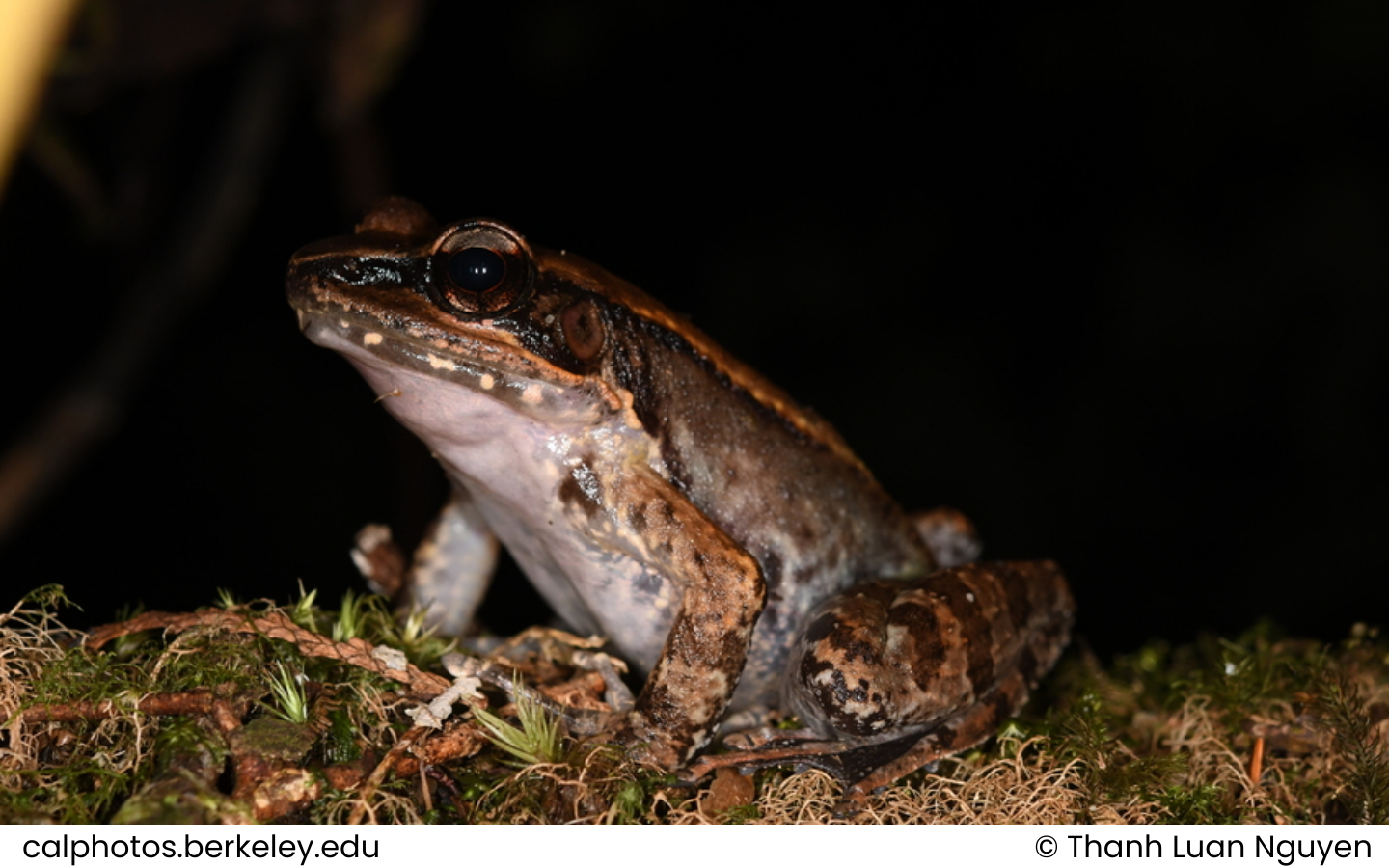
Science name: Hylarana montivaga – (Smith, 1921)
Taxonomic: Animalia>> Chordata>> Amphibia>> Anura >> Ranidae >> montivaga
Species status: Endemic ; IUCN status: EN (Endangered Species)
Description:
This frog species is part of the Hylarana genus, known for its association with forested stream environments.
Distribution and habitat:
Elevation:
Hylarana montivaga is found at elevations between 1,500 and 2,000 meters above sea level.
Area:
This species is endemic to southern-central Vietnam, with records only confirmed from Lam Dong Province. Its estimated extent of occurrence (EOO) is 3,139 km², distributed across four threat-defined locations. Similar habitats in adjacent areas of the Langbian Plateau suggest that the species’ range may extend further, although no additional surveys have expanded its range since its original description in 1921. Previous records from northern Vietnam and Thailand are now excluded, as they are referable to different species.
Habitat:
Hylarana montivaga inhabits montane tropical/subtropical moist forests, particularly around streams. It is primarily found in or near forested wetlands such as permanent streams and rivers, and breeding activities occur in such habitats.
Behaviour and ecology:
This frog species is part of the Hylarana genus, known for its association with forested stream environments.
Conservation and status:
IUCN Red List Category and Criteria:
Hylarana montivaga is listed as Endangered under criterion B1ab(iii) due to its limited range and ongoing decline in habitat quality.
Population Trend:
The population trend is currently decreasing, primarily due to habitat degradation.
Threats:
Habitat Loss: The species’ habitat is under threat from agricultural expansion, aquaculture, and associated deforestation.
Disturbance: Much of the habitat in its range is moderately to highly disturbed, and the species has been observed breeding in such environments.
Conservation Actions:
Protected Areas: The species is likely to benefit from conservation efforts targeting montane forests in southern-central Vietnam.
Further Research: Surveys to assess population size, distribution, and the impact of habitat disturbances on breeding success are necessary.
Crocodile Trail – The Best Birding Trail in Cat Tien National Park
If you’re a birder or nature photographer planning a trip to Vietnam, few places offer [...]
Cong Troi Trail – Top 1 Dalat Plateau Birding Trail Experience
If you’re a birder or nature photographer planning a trip to Vietnam’s Central Highlands, the [...]
How to Identify the Greater Sand Plover, Tibetan Sand Plover and Siberian Sand Plover
Identification Differences within the Sand Plover Complex: The sand plover group, which was traditionally divided [...]
Highlights of Cat Tien National Park Reptiles and Amphibian Endemics
Spanning over 71,350 hectares of tropical forests, grasslands, and wetlands, Cat Tien National Park is [...]
Highlights of Cat Tien National Park Mammals in a World Biosphere Reserve
In addition to reptiles and birds, Cat Tien National Park is also rich in mammals, [...]
Kontum Plateau Endemic and Highlight bird
Kontum Plateau Endemic And Highlight Bird species like Chestnut-eared Laughingthrush and top birding routes while [...]